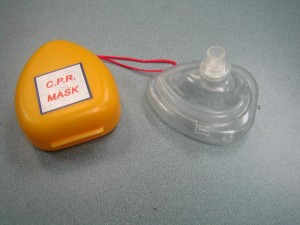First Aid Certification in Las Vegas CPR stands as the best training service provider of quality training programs in Nevada. They offer the largest selection of training programs – from BLS (Basic Life Support) to PALS (Pediatric Advanced Life Support) training. Schedules are very flexible at this provider as well – you can find class schedules even during evenings and weekends. Starting your training is as easy as going to the main training facility and enrolling or even signing up through the provider’s website. It’s up to you.
How do I get certification?
Trainees receive completion cards or “certificates” once a program is completed. Out of all programs offered at Las Vegas CPR, only one has an option of not getting certification once the program is completed. The rest of the programs have skills tests and written exams after the classes are completed that students need to pass in order to get the credentials they need.
All certificates or cards expire after two years, but remain valid throughout the entire country during that time period. In order to keep the certificates valid, renewal classes are offered at Las Vegas CPR. However, not all programs have renewal programs; students will still have to retake the entire program to keep the validity of their cards.
What program should I sign up for with First Aid Certification in Las Vegas?

There are different programs at Las Vegas CPR that are certification programs.
Heartsaver CPR and AED [4 hours] is a certification class that teaches students how to perform basic CPR on victims of cardiac arrest with only 1 rescuer. This is tailored specifically towards the general public, so trainees who sign up are not required to be in healthcare or are studying it. Lessons are focused on how to recognize a victim of an arrest, contact emergency help, and begin chest compressions and rescue breathing.
Certification for this program is optional; a skills test is given at the end for trainees who want to get a completion card.
Heartsaver CPR and AED (C) [4.5 hours] is a similar program to the previous CPR program mentioned, but this one is targeted towards healthcare providers and students. While the curriculum is more or less the same, this goes more in depth on the topic of Basic Life Support – the guideline all CPR classes follow – from the American Heart Association.
Certification is mandatory and can be achieved upon passing the skills test and the written exam at the end of the program.
BLS for healthcare providers (C) [4.5 hours] is even more specialized than the previous program, tackling the entire 2010 Basic Life Support guidelines from the AHA. This is program can only be taken by healthcare providers. The main difference between this program and two previous are the CPR skills taught. BLS for healthcare providers teaches both 1 person and 2 person rescue in dealing with victims of cardiac arrest.
Certification is mandatory and can be achieved upon passing the skills test and the written exam at the end of the program.
ACLS and PALS (Advanced Cardiac Life Support, Pediatric Advanced Life Support) teach the same basic CPR skills targeted towards healthcare providers who work in a hospital, clinic, or other similar settings. The approach taught in this program is team-based, a “code team” that answers to cases of patients going into cardiac arrest. However, ACLS is for managing adult victims and PALS is for managing pediatric victims (from infants to younger teenagers).
